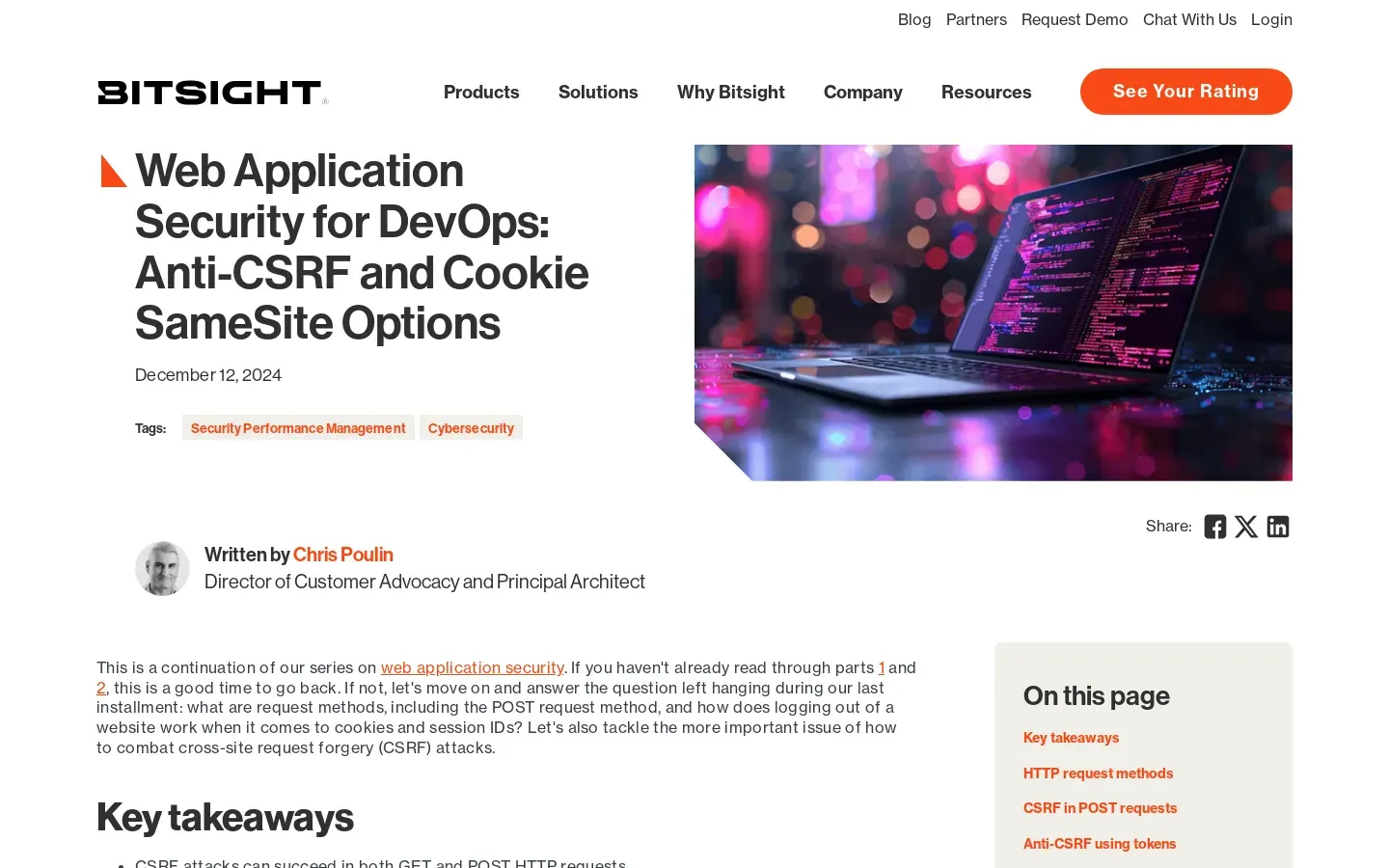
Web Application Security: CSRF Prevention and Cookie Practices
/ 4 min read
Quick take - A recent tutorial series on web application security emphasizes the importance of understanding HTTP request methods, particularly GET and POST, and offers strategies to mitigate risks such as Cross-Site Request Forgery (CSRF) attacks through best practices and common pitfalls to avoid.
Fast Facts
- HTTP Request Methods: The tutorial distinguishes between GET (exposes parameters in the URL, prone to vulnerabilities) and POST (encapsulates parameters in the request body, more secure for sensitive data).
- CSRF Vulnerabilities: Both GET and POST requests can be exploited in Cross-Site Request Forgery attacks; implementing anti-CSRF tokens is essential for form security.
- Cookie Management: Utilizing the Set-Cookie SameSite option helps control cookie transmission in cross-site requests, reducing CSRF risks.
- Best Practices: Users should log out after sessions, keep URLs under 2,048 characters, and understand HTTP methods to prevent security flaws.
- Common Mistakes: Key pitfalls include misunderstanding HTTP methods, neglecting CSRF risks, improper anti-CSRF token implementation, and inadequate logout practices.
Understanding Web Application Security: Key Insights from HTTP Methods and CSRF Prevention
As web applications continue to evolve, the security challenges they face become increasingly complex. A recent tutorial series on web application security has provided valuable insights into critical concepts surrounding HTTP request methods and strategies for mitigating risks such as Cross-Site Request Forgery (CSRF) attacks. This article synthesizes key points from the series, emphasizing foundational knowledge, common pitfalls, and recommended security practices.
Key Insights into HTTP Request Methods
The tutorial begins by examining the fundamental differences between the two primary HTTP request methods: GET and POST. GET requests transmit parameters through the URL, making them easily accessible but also prone to security vulnerabilities. For instance, GET requests have limitations on URL length—generally capped at 2,048 characters—which can lead to issues if exceeded. Moreover, sensitive information can unintentionally be exposed in the URL, increasing the risk of data breaches.
In contrast, POST requests encapsulate parameters within the body of the request, offering a more secure alternative for transmitting sensitive data. Understanding these differences is crucial for developers and security professionals tasked with safeguarding web applications.
Security Risks and Recommendations
The tutorial highlights several security risks associated with GET requests, particularly concerning CSRF vulnerabilities. CSRF attacks can exploit both GET and POST requests, allowing unauthorized commands to be transmitted from a user’s browser without their consent. To combat these risks, the tutorial advocates for the implementation of anti-CSRF tokens in forms. These tokens serve as a safeguard, ensuring that form submissions are legitimate and from authenticated users.
Additionally, the use of the Set-Cookie SameSite option is recommended to control when cookies are sent in cross-site requests. This measure significantly reduces the risk of CSRF attacks by preventing unauthorized access to session cookies.
Best Practices for Security
To further enhance security, the tutorial underscores the importance of logging out of websites after completing sessions, especially on sensitive platforms such as banking sites. This practice mitigates the risk of unauthorized access through lingering session cookies.
Moreover, developers are advised to keep URLs concise and under 2,048 characters to avoid complications with browser and server limitations. A proper understanding of HTTP request methods and their implications for security is critical for effective web application management.
Common Pitfalls to Avoid
The series also elucidates common mistakes that users should be wary of:
- Misunderstanding HTTP Request Methods: Failing to grasp the differences between GET and POST can lead to improper data handling and security flaws.
- Neglecting CSRF Vulnerabilities: Underestimating the risks associated with CSRF can leave applications open to exploitation.
- Improper Implementation of Anti-CSRF Tokens: Tokens must be generated and validated correctly to be effective.
- Overlooking SameSite Cookie Attributes: Not utilizing these attributes can expose applications to CSRF attacks.
- Inadequate Logout Practices: Failing to log out can result in unauthorized access, particularly in sensitive scenarios.
Recommended Tools and Resources
The tutorial emphasizes several tools and resources that are vital for understanding and implementing robust web application security measures. These resources aid in addressing CSRF vulnerabilities and managing session cookies effectively.
By following these recommended best practices and avoiding common pitfalls, developers can significantly enhance the security posture of their web applications. This proactive approach not only protects user data but also upholds organizational integrity in an increasingly digital world.



